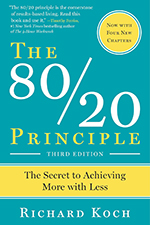Building Your Network in a New City
Tim Stephenson
MTNA Business Digest
Volume 4, Issue 4
July 2025
Moving to a new town or city can be daunting, but building a new network doesn’t have to be! Below are a few quick resources for getting started in a new place.
Check Out Local Newsletters/Community Forums
Many cities have a tourism organization (for example, Visit ___ or Downtown ___) that offers periodic newsletters that can help keep you up to date on events, networking, and other activities happening in your area. If there is an online community forum, you can share information about your studio and lessons. Some cities also have an arts council, with resources and newsletters specific to the field in your area!
Join Community Groups
Nearly every U.S. city has a chamber of commerce, which is a great place to start when looking for opportunities to engage with a new community. In most cases, you can become a member and access a directory of businesses/business owners that can come in handy.
Neighborhood groups, PTA or parent groups, and local hobbyist groups that are of interest to you are other ways to meet people in an organic way.
Local Music Teachers Associations
Joining your local and state Music Teachers Association is an excellent way to meet and build your network of music teachers. Make sure that you are added to your MTA’s teacher directory if they have one. MTNA’s Find a Music Teacher is another tool that can help you connect directly with other teachers in your new area!
Attend Community Events
There’s nothing quite like connecting with people in-person and hopefully your new community has plenty of opportunities to do so: farmers’ markets, homeschool co-ops, community festivals, neighborhood parties, and more! Of course, you can’t do it all, but it is worthwhile to take advantage of networking at these types of events as often as you can. Word-of-mouth is an excellent marketing tool!
Activate Your Existing Network
Speaking of word-of-mouth, you will likely be surprised to learn of the connections you already have in a new city through your current network! Don’t be shy about sharing your exciting news with the people you already know, because they will be thrilled to help you build your network in a new place.
On a personal note, I am writing this article on my first day as a resident of Los Angeles, having relocated from Indianapolis, so I look forward to utilizing these resources myself!
Looking for a good read?

Davis Dorrough, NCTM
The 80/20 Principle: The Secret to Achieving More with Less by Richard Koch
I first encountered The 80/20 Principle: The Secret to Achieving More with Less by Richard Koch in a 2014 Clavier Companion interview with Randall Faber, co-author of Piano Adventures, where he recommended it as a top book for personal productivity. I took the recommendation to heart, considering the remarkable success the Fabers have had in building a piano method empire. I ordered the book right away, and over time, the 80/20 principle has become a key part of how I prioritize tasks and optimize processes. I often apply it to everything from planning a birthday party to running my music studio, helping me make the most of my limited time and allowing me to focus on what truly matters.
Understanding the 80/20 Principle
The 80/20 principle, also known as the Pareto Principle, suggests roughly 80% of results come from just 20% of efforts. Its roots trace back to Italian economist Vilfredo Pareto, who observed in 1897 that 80% of Italy’s land was owned by 20% of the population. While his observation focused on wealth distribution, later thinkers—most notably Richard Koch—expanded the concept to show how an imbalance between input and output appears across many areas, from business to personal development. In essence, the principle states “a minority of causes, inputs, or efforts often lead to a majority of the results, outputs, or rewards.” Or, put simply, choosing the right small efforts can lead to big results. Here are some key insights from the book:
Focus on What Matters Most
Koch encourages us to figure out which few tasks really move the needle. When we zero in on the work that makes the biggest difference, we get more done with less stress.
Use Time and Energy Wisely
Instead of spreading ourselves thin, the 80/20 principle invites us to spend our time where it counts. It challenges the idea that every task deserves equal effort—some things just give better returns.
Keep It Simple
Not everything on our to-do list is worth doing. By cutting out or delegating the less important stuff, we make space for what truly matters.
Make Smarter Choices
When we understand the connection between input and outcome, we make better decisions. It becomes easier to say “yes” to what supports our goals—and “no” to what doesn’t.
Applying the 80/20 Principle in Music Teaching
For piano teachers and studio owners, integrating the 80/20 principle can lead to more efficient operations and better educational outcomes. Here are several examples of how the principle can be applied:
- Curriculum Development:
Identify the 20% of teaching materials or strategies that drive 80% of student progress. Also, pinpoint difficult sections in the repertoire and focus on strengthening students’ weaker skills to make lessons more efficient and practice time more productive.
- Prioritizing High-Value Services:
Not all music studio offerings are equally impactful or valued by parents and students. The 80/20 principle suggests a small percentage of services will drive most of the engagement and results. By identifying and focusing on these, we can maximize our effectiveness while reducing our workload. One great way to identify which activities parents and students value most is to track enrollment and collect feedback. It’s also important to weigh which activities have had the most educational benefits from our perspective as a qualified teacher.
- Overcoming Perfectionism in Teaching and Business:
Perfectionism can be a significant obstacle to efficiency. The 80/20 principle challenges the idea that every detail must be flawless and instead emphasizes that focusing on the most impactful efforts will yield the best results. In both teaching and business, aiming for “good enough” in lower-priority areas allows more time and energy for what truly matters.
- Studio Administration:
Streamline administrative tasks by automating or delegating the 80% of duties that are less critical, allowing more time to be devoted to students and planning. Things like studio management software and outsourcing can help you ditch the duties you enjoy least.
Richard Koch’s The 80/20 Principle offers a powerful framework for achieving more by doing less—a true “work smarter, not harder” approach. By focusing on the small percentage of activities that yield the greatest results, music educators can boost both teaching effectiveness and studio management while avoiding burnout. Of course, the other 80% still has value. If certain tasks bring you joy, keep them! The key is to recognize what truly adds meaning and impact, and what can be streamlined or let go. Each teacher will have a unique perspective shaped by their priorities and students. The 80/20 principle simply helps you focus on what matters most, so you can build a more balanced, fulfilling teaching life.
Ask Us Anything!
MTNA Business Network
Welcome to this new segment, designed to meet your needs! This issue’s question comes from an independent teacher with a home studio in Florida.
Question: “As I work on expanding my studio’s internet presence (Google Business/website), I am uncomfortable sharing my personal phone number. How can I maintain my privacy but also be responsive to parents who don’t want to use email?”
Answer:
A separate business line is one option, and there are many small business phone and internet plans offered by various providers (depending on what is available in your area). However, many independent (solo) teachers are comfortable using their personal phone number with their enrolled families but not listing it publicly.
Andrea Miller shares, “If you want a separate number, you might want to explore virtual phone services like Google Voice, etc. You can set it up on your personal phone but then set up “business hours” so calls and texts to the business number don’t interrupt your life constantly. When I had my multi-teacher studio I did have this setup. It was nice to be able to easily transfer calls to an administrative person and also be able to completely redirect all communications to another teacher when I was on my honeymoon.”
Ryan Greene shares similar advice: “For a business phone number for texting and calling, explore web-connected services like Google Voice (free). If you’d like to take a deeper dive into these tech hacks (plus other communication hacks), visit the 2023 MTNA Webinar Archives to view my August 2023 MTNA webinar, ‘10 Tech Hacks for the Modern Studio.’”
Do you have a question for the MTNA Business Network teachers? Ask us anything! Submit questions or provide feedback.

Tim Stephenson
is a pianist, teacher and administrator on staff at the Indianapolis Symphony Orchestra and on faculty at Pacific Piano School. Tim is currently a doctoral candidate at IU’s Jacobs School of Music.

Davis Dorrough, NCTM, MM, is an author, teacher and piano editor at Alfred Music. He is co-author of the Easy Piano Lead Sheets and Chord Charts series, created to help students master essential contemporary music skills